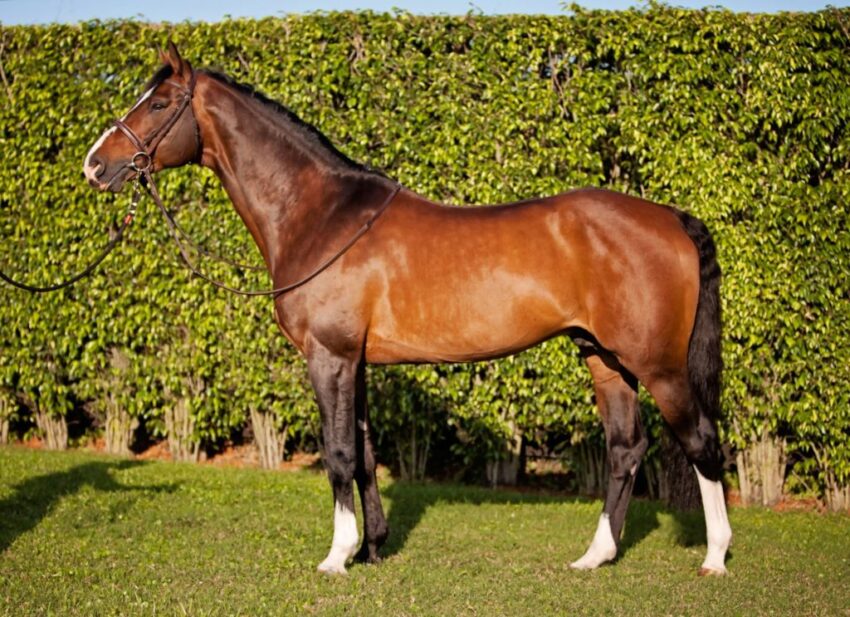The Swedish Warmblood horse originates from the Flyinge and Stromsholm areas of Sweden. Horses from Asia and Europe, especially horses originating from Turkey, Russia, Germany, and Spain all helped to create this breed. Swedish Warmbloods are used nowadays as a riding horse because of its straight pacing. They also shine in different competitions such as dressage and jumping. They are amazing driving horses too, and for this reason, it was built an export market for the breed everywhere in Europe and North America. Many years ago, the majority of Swedish Warmbloods horses were intended to be carriage horses, with some of the bigger ones shifting into agricultural work. Once the military realized how rideable they were, the breeding programs changed their focus on riding features instead of the working ones. The Swedish Warmblood is calm, but a direct horse that enjoys going for a good ride. Below we have listed some of the most interesting facts you should know about this horse. If you are looking to buy a Swedish Warmblood horse than this article will help you decide if this is the right horse for you.


1-Several horse breeds bloodline helped to create this horse
In the 17th century, breeders in Sweden noticed the energy of Friesian and Spanish horses and wanted to take those qualities to their local horses. Imports helped to develop the power and energy of the local herds, so breeders looked all over the rest of Europe and Asia for breeds that had these kinds of traits. By taking the bloodline of Thoroughbreds, Arabians, Trakehners, and Hanoverians it helped to even out the harshness that was seen in the local bloodlines and earned some added height to the smaller horses. Over the next centuries, breeders proceeded to focus on taking in the best horses from strong horse breeds to their local stock.



2-The Swedish Warmblood horse was created in the 1920s by 3 stallions
In the 1920s, three stallions helped to form the Swedish Warmblood into more of an official breed, named Hamlet, Tribun, and Hamplemann. In 1945, four Trakehner stallions helped to preserve the heredity of the breed too. One of the stallions, named Heristal, was an heir of Hyperion. From the 1920s until 1982, the breeding programs for the Swedish Warmblood were controlled by the government. Some exports still happen even today, but the main goal of the Swedish Warmblood breeding programs is to continue promoting their national horse.


3-The Swedish Warmblood comes in every color
A Swedish Warmblood horse can be any coat color. There are particular coat colors with this breed that are connected with harmful foaling factors, so horses with such a coat are prohibited from receiving breeding permission. Chestnut, seal brown, and bay coat colors are the most popular.



4-The Swedish Warmblood has an average height
The majority of Swedish Warmbloods reach amid 16 and 17 hands. Some horses can be a little bit taller because of the diverse genetics of the breed, while some mares may be a little bit shorter.


5- They are known all over the world for their flowing gait
Although the Swedish Warmblood horse has very positive traits their fame, however, is based on their running gait. It is predictable, comfortable, manageable, and very smooth. The Swedish Warmblood is a very unique European horse that it is distinguished from all the other European horses because of its importance on riding. When the majority of European countries were attempting to breed heavy draft horses for farming and war, the Swedes were accomplishing on creating a peaceful, smart horse that loved to ride.



6-The Swedish Warmblood horse is one of Sweden’s biggest priority
Sweden has a few local horse breeds and they are very focused on preserving the health of the Swedish Warmblood. For this reason, they use the country’s vast areas of land and focus on socializing local herds to produce horses that are strong not only physically but also mentally.


7- They treat every horse as an individual
Another important aspect when it comes to Swedish Warmblood horse is the fact that their breeders treat each horse as an individual and this point of view needs respect for each horse. Every horse has natural skills and features that help to create the idea of what the individual can do. Even if a horse doesn’t obtain all the qualities to be accepted for breeding, that doesn’t diminish the value of the horse’s individuality. Only the greatest horses are chosen for breeding to guarantee the long-term continuation of the Swedish Warmblood.



